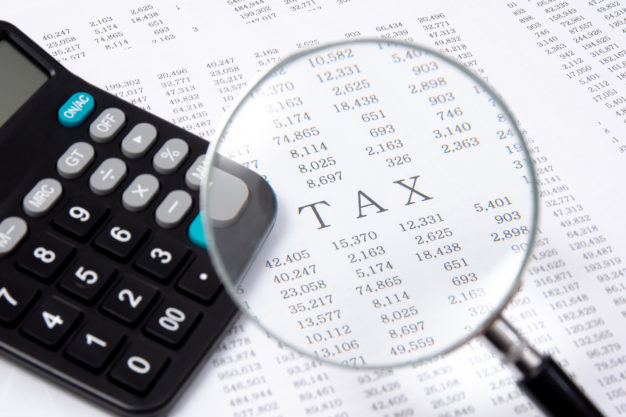Change of Accounting Method Procedures Updated, Rev. Proc. 2024-23
The IRS has released guidance listing the specific changes in accounting method to which the automatic change procedures set forth in Rev. Proc. 2015-13, I.R.B. 2015-5, 419, apply. The latest guidance updates and supersedes the current list of automatic changes found in Rev. Proc. 2023-24, I.R.B. 2023-28, 1207.
Significant changes to the list of automatic changes in Rev. Proc. 2023-24 include:
- The following sections are removed because these sections are obsolete:
- (1) The following sections are removed because these sections are obsolete:
- (a) Section 7.01, relating to changes to a different method or different amortization period for research and experimental expenditures;
- (b) Section 12.18, relating to late revocation of elections under Code Sec. 263A(d)(3); and;
- (c) Section 20.13, relating to an accrual method taxpayer that wants to change its method of accounting for one or more inventory costs to treat such costs as incurred in accordance with Reg. §§1.461-1(a)(2) and 1.461-4(d)(4);
- (2) Section 3.12, relating to a taxpayer that wants to change its treatment of natural gas transmission and distribution property costs to use the natural gas transmission and distribution property safe harbor method of accounting (NGSH Method) under Rev. Proc. 2023-15, is clarified as follows. First, by adding new paragraph 3.12(8) to allow a taxpayer changing to the NGSH Method to choose to treat a method change filed for the taxpayer’s second taxable year ending after May 1, 2023, as filed for the taxpayer’s first taxable year ending after May 1, 2023, solely for purposes of the special rule under section 5.08(3)(a) of Rev. Proc. 2023-15. Second, section 3.12(3)(c)(ii) is clarified to provide that if the taxpayer’s change to the NGSH Method described in Rev. Proc. 2023-15 applies to any asset that is public utility property within the meaning of Code Sec. 168(i)(1), then the taxpayer will adjust its deferred tax reserve account or similar account in the taxpayer’s regulatory books of account by the amount of the deferral of federal income tax liability associated with the Code Sec. 481(a) adjustment applicable to the public utility property subject to the Form 3115 if such amount is no longer being normalized for regulatory purposes by the taxpayer;
- (3) Section 6.01, relating to changing from an impermissible to a permissible method of accounting for depreciation or amortization, is modified to remove the second sentence of section 6.01(1)(c)(xx), providing that the change in method of accounting under section 6.21 could be filed under section 6.01 if the duplicate copy was properly filed under section 6.01 before May 11, 2021, because this language is obsolete;
- (4) Section 6.18, relating to changing from an impermissible to a permissible method of accounting for an item of qualified improvement property placed in service after December 31, 2017, is modified by removing paragraph (2), providing a temporary waiver of the eligibility rule in sections 5.01(1)(d) and 5.01(1)(f) of Rev. Proc. 2015-13, because this language is obsolete;
- (5) Section 6.19, relating to certain late elections under §§ 168 and 1502 or revocation of certain elections under Code Sec. 168, is modified to remove all references to Rev. Proc. 2020-25, I.R.B. 2020-19, 785, because these references as used in section 6.19 are obsolete;
- (6) Section 6.21, relating to depreciation of tangible property under Code Sec. 168(g) by controlled foreign corporations, is modified by removing the sunset provision in paragraph (3) to permit CFCs to continue to change their depreciation method to the alternative depreciation system (ADS) in Code Sec. 168(g) under the automatic change procedures of Rev. Proc. 2015-13 (regardless of whether the CFC’s historic depreciation method was permissible or impermissible);
- (7) Section 7.01, relating to a changing the method of accounting for SRE expenditures, is modified and clarified as follows. First, new section 7.01(2)(c) is added to clarify that section 7.01(1)(a) of this revenue procedure does not apply to a change to rely on interim guidance provided in sections 8 and 9 of Notice 2023-63, as modified by Notice 2024-12. Second, section 7.01(5)(a) is modified to provide that the eligibility rule in section 5.01(1)(d) of Rev. Proc. 2015-13 (relating to changes in the final year of a trade or business) does not apply to a change described in section 7.01(1)(a) of this revenue procedure for the taxpayer’s first or second taxable year beginning after December 31, 2021. Third, section 7.01(5)(b) is clarified to provide that a taxpayer may make a change described in section 7.01(1)(a) of this revenue procedure for its second taxable year beginning after December 31, 2021, regardless of whether the taxpayer made a change for the same item for its first taxable year beginning after December 31, 2021. Fourth, section 7.01(6) is clarified to provide that a taxpayer does not receive audit protection under section 8.01 of Rev. Proc. 2015-13 for a change under section 7.01(1)(a) of this revenue procedure in the second taxable year beginning after December 31, 2021, with respect to expenditures paid or incurred in the first taxable year beginning after December 31, 2021, if the taxpayer did not change its method of accounting under section 7.01(1)(a) in an effort to comply with § 174 for the first taxable year beginning after December 31, 2021. Fifth, section 7.01(7) is modified to provide that the designated automatic accounting method change number for all changes under section 7.01 of this revenue procedure is “265;”
- (8) Section 12.01, relating to certain uniform capitalization (UNICAP) methods used by resellers and reseller-producers, is modified as follows. First, section 12.01(2)(b), providing a temporary waiver of the eligibility rule in section 5.01(1)(f) of Rev. Proc. 2015-13, is removed because this language is obsolete. Second, to add section 12.01(1)(b)(vi) to provide that the change under section 12.01 does not apply to a taxpayer changing to or from the direct reallocation method or the step-allocation method. Instead, this change must be requested under the non-automatic change procedures provided in Rev. Proc. 2015-13. Third, to add new section 12.01(1)(b)(vii) to provide that the change under section 12.01 does not apply to a taxpayer using the direct reallocation method or step-allocation method that wishes to either make an election or revoke an election to use the 90-10 de minimis rule to allocate a mixed service department’s costs to resale activities. Instead, this change must be requested under the non-automatic change procedures provided in Rev. Proc. 2015-13;
- (9) Section 12.02, relating to certain uniform capitalization (UNICAP) methods used by producers and reseller-producers, is modified as follows. First, section 12.02(4)(b), providing a temporary waiver of the eligibility rule in section 5.01(1)(f) of Rev. Proc. 2015-13, is removed because this language is obsolete. Second, section 12.02(1)(b)(vi) is added to provide that the change under section 12.02 does not apply to a taxpayer changing to or from the direct reallocation method or the step-allocation method. Instead, this change must be requested under the non-automatic change procedures provided in Rev. Proc. 2015-13. Third, new section 12.02(1)(b)(vii) is added to provide that the change under section 12.02 does not apply to a taxpayer using the direct reallocation method or step-allocation method that wishes to either make an election or revoke an election to use the 90-10 de minimis rule to allocate a mixed service department’s costs to production or resale activities. Instead, this change must be requested under the non-automatic change procedures provided in Rev. Proc. 2015-13;
- (10) Section 12.07, relating to a change not to apply Code Sec. 263A to one or more plants removed from the list of plants that have a preproductive period in excess of two years, is modified to remove section 12.07(2), providing audit protection that applies to blackberry, raspberry, and papaya plants for taxable years that end on or before February 15, 2013, because this language is obsolete;
- (11) Section 12.16, relating to the small taxpayer exception from the requirement to capitalize costs under Code Sec. 263A, is modified to remove section 12.16(3)(b), providing a temporary waiver of the eligibility rule in section 5.01(1)(f) of Rev. Proc. 2015-13 for certain taxpayers, because this language is obsolete;
- (12) Section 15.01, relating to changes in overall method from the cash receipts and disbursements method (cash method) to an accrual method is modified to remove section 15.01(5)(b), providing a temporary waiver of the eligibility rule in section 5.01(1)(e) of Rev. Proc. 2015-13 for changes to comply with Code Sec. 451(b), because this language is obsolete;
- (13) Section 15.17, relating to small business taxpayers changing the overall method of accounting to the cash method or to a method of accounting in which the small business taxpayer uses an accrual method for purchases and sales of inventories and uses the cash method of accounting for computing all other items of income and expense, is modified to remove section 15.17(6)(b), providing a temporary waiver of the eligibility rule in section 5.01(1)(e) of Rev. Proc. 2015-13 for certain taxpayers, because this language is obsolete;
- 14) Section 16.08, relating to changes in the timing of income recognition under Code Sec. 451(b) and (c), is modified and clarified as follows. First, section 16.08(3)(a) is added, to clarify that a change under section 16.02 does not apply to a change to comply with the all events test in Reg. §1.451-1(a). Instead, this change must be requested under the non-automatic change procedures provided in Rev. Proc. 2015-13. Second, section 16.08 is modified to remove section 16.08(4)(a), relating to short Form 3115, because it is obsolete. Third, section 16.08 is modified to remove section 16.08(4)(c), relating to streamlined method change procedures for certain taxpayers, because it is obsolete. Fourth, section 16.08 is modified to remove section 16.08(5)(c), relating to certain changes with a Code Sec. 481(a) adjustment of zero being disregarded for eligibility rules, because it is obsolete. Fifth, section 16.08 is modified to remove section 16.08(6)(a), relating to audit protection for taxpayers using the streamlined method change procedures, because it is obsolete. Sixth, section 16.08 is modified to remove section 16.08(6)(b)(i), relating to audit protection for taxpayers under examination, because it is obsolete. Seventh, section 16.08(7)(b), which provides an ordering rule for concurrent cost-offset related inventory method changes and changes to apply a cost offset method, is modified to require a taxpayer making a cost-offset related inventory method change(s) and a change to the AFS cost offset method or advance payment cost offset method in the same year of change to make the cost-offset related inventory method change(s) first. Sections 16.08(2)(a)(i)(E), 16.08(2)(a)(ii)(F) and 16.08(2)(b)(v), which provide corresponding changes to a cost offset method as a result of cost-offset related inventory method changes, have been modified to apply only to taxpayers presently using a cost offset method, consistent with the new ordering rule. Eighth, the ordering rule for concurrent cost-offset related inventory method changes and corresponding changes to a cost offset method in section 16.08(7)(b) has been moved to a new section 16.08(7)(c); section 16.08(7)(c) is also clarified to provide that a taxpayer may file a single Form 3115 that includes both the cost-offset related inventory method change and the corresponding cost offset change. Ninth, section 16.08(7)(d) is added to provide examples to illustrate the operation of the ordering rules which require a taxpayer to make a cost-offset related inventory method change before a change to apply a cost offset method and a cost-offset related inventory method change before a corresponding change to a cost offset method;
- (15) Section 19.02, regarding changes in method of accounting under Code Sec. 460 to rely on the interim guidance provided in section 8 of Notice 2023-63, I.R.B. 2023-39, 919, is modified as follows. Section 19.02(4) is modified to provide that the eligibility rule in section 5.01(1)(d) of Rev. Proc. 2015-13 (relating to changes in the final year of a trade or business) does not apply to a change described in section 19.02(1) of this revenue procedure for the taxpayer’s first or second taxable year beginning after December 31, 2021;
- (16) Section 22.04, relating to a taxpayer that wants to change from an impermissible method of identifying or valuing inventories to a permissible method of identifying or valuing inventories, is modified to remove section 22.04(1)(d), providing a temporary waiver of the eligibility rule in section 5.01(1)(f) of Rev. Proc. 2015-13 for certain changes related to a cost offset method, because this language is obsolete;
- (17) Section 22.10, relating to changes to permissible methods of identification and valuation of inventories, is modified by removing section 22.10(1)(d), providing a temporary waiver of the eligibility rule in section 5.01(1)(f) of Rev. Proc. 2015-13 for certain changes related to a cost offset method, because this language is obsolete;
- (18) Section 22.17, relating to changes from currently deducting inventories to permissible methods of identification and valuation of inventories, is modified by removing section 22.10(1)(d), providing a temporary waiver of the eligibility rule in section 5.01(1)(f) of Rev. Proc. 2015-13 for certain changes related to a cost offset method, because this language is obsolete;
- (19) Section 22.18, relating to a change by a small business taxpayer to certain Code Sec. 471 methods of accounting, is modified as follows. First, section 22.18(5)(b) and (c), providing a temporary waiver of the eligibility rule in section 5.01(1)(f) of Rev. Proc. 2015-13 for certain changes, is removed because the language is obsolete. Second, section 22.18 (6)(b), providing streamlined method change procedures for certain taxpayers, is removed because this language is obsolete;
- (20) Section 23.01, relating to certain changes from the LIFO inventory method, is modified as follows. First, section 23.01(2)(b), providing a temporary waiver of the eligibility rule in section 5.01(1)(f) of Rev. Proc. 2015-13 for certain changes, is removed because the language is obsolete. Second, section 23.01(8), denying ruling protection in certain cases, is removed because this language is obsolete; and
- (21) Section 24.02, relating to taxpayers requesting to change their method of accounting from the mark-to-market method of accounting described in Code Sec. 475 to a realization method, is clarified to provide that a dealer in securities making such change under the non-automatic change procedures in Rev. Proc. 2015-13 must also file a Notification Statement that satisfies all applicable requirements of section 24.02(7) of this revenue procedure, including the timely filing requirements.
Subject to a transition rule, this revenue procedure is effective for a Form 3115 filed on or after April 30, 2024, for a year of change ending on or after September 30, 2023, that is filed under the automatic change procedures.
Rev. Proc. 2024-23 amplifies and modifies Rev. Proc. 2023-24, I.R.B. 2023-28, 1207. Rev. Proc. 2011-46, I.R.B. 2011-42, 518, is modified. Rev. Proc. 2024-23 also modifies Rev. Rul. 2004-62, 2004-1 CB 1072; Rev. Rul. 2000-7, 2000-9 CB 712; Rev. Rul. 2000-4, 2000-1 CB 331; Rev. Proc. 2007-48, 2007-2 CB 110; Rev. Proc. 2007-16, C.B. 2007-1, 358; and Rev. Proc. 2000-50, I.R.B. 2000-52, 601.
Rev. Proc. 2024-23







